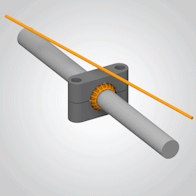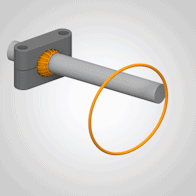Angular compensation in rail vehicle construction
Michael Hornung | 23. April 2020
Whether in a welded construction of a road/rail vehicle, or in the interior of a double-decker train; you have to work with tolerances everywhere and be able to compensate for them. Especially when linear, pivoting or rotary movements should continue to function without problems.
There are often linear guides used in railway construction vehicles or in the municipal vehicles of transportation companies, whose smooth motion can be impaired by the influence of temperature, manufacturing and assembly tolerances. If, for example, a height adjustment is to be guided by two round shafts, it is impossible to align them 100% parallel to each other.
Floating bearings with more clearance are used here. This has no effect on the guidance accuracy since the floating bearings are installed on only one of two guide shafts. On the other shaft there are still fixed bearings, which determine the guidance accuracy.

For drylin W and drylin R linear guides, there is a wide range of floating bearings that provide sufficient clearance in Y or Z direction. The clearance compensation can range from +/- 0.2mm to +/- 3mm.

In the interior of trams and intercity trains, it is often necessary to compensate for tolerances in pivoting movements. Be it for the mechanics of sliding/swivel doors and gangways or simply for the installation of handrails.
There are igubal bearings with angle compensation in the most diverse forms. Spherical bearings, rod ends and angled joints. Depending on the bearing, tilt angles of up to 40° can be achieved.


With the new metal-polymer variant of rod end bearings, flange bearings and pillow block bearings, igus spherical bearings can now also be used in the exterior of a train for pantographs, front bumpers and brakes.

